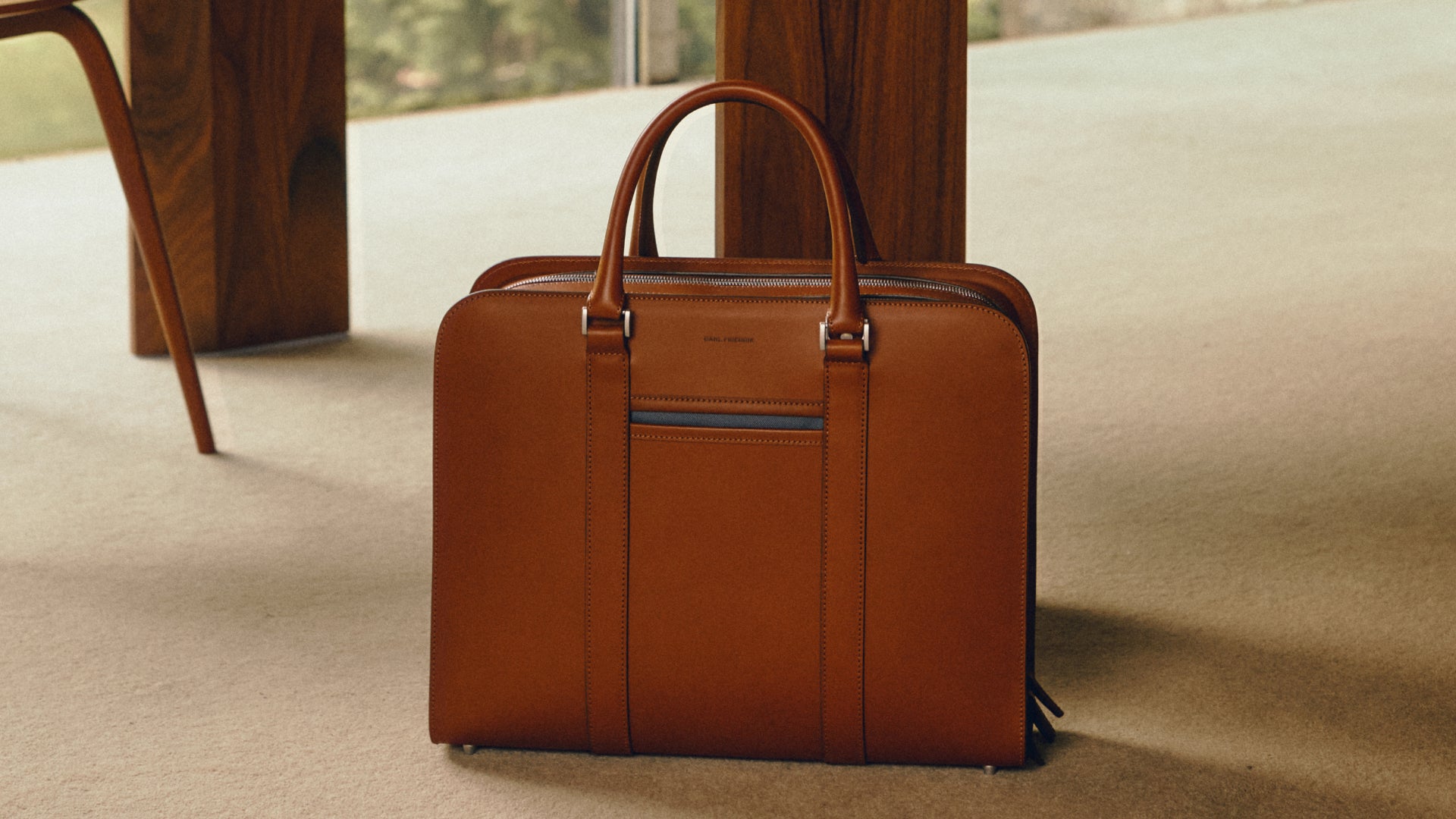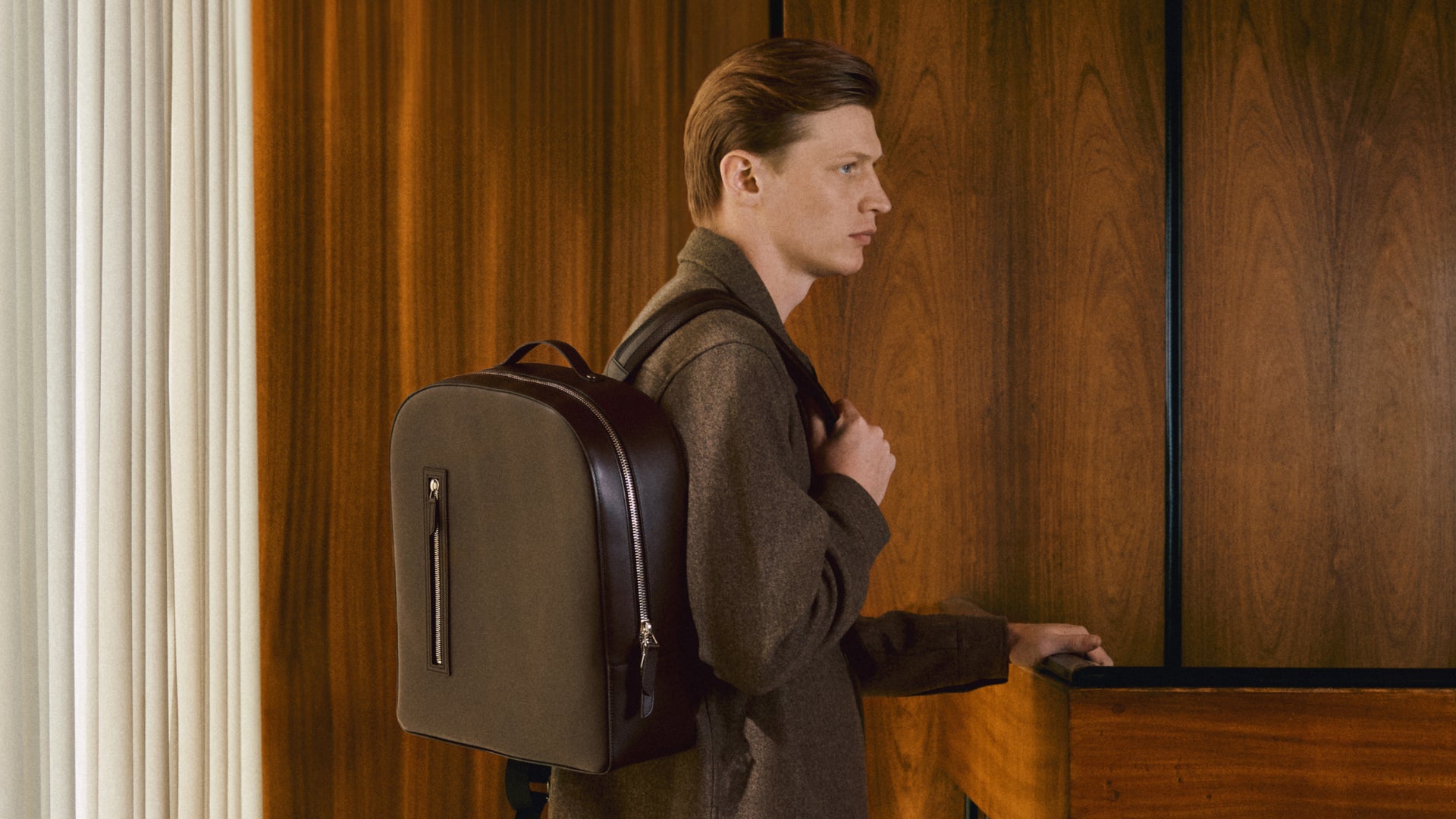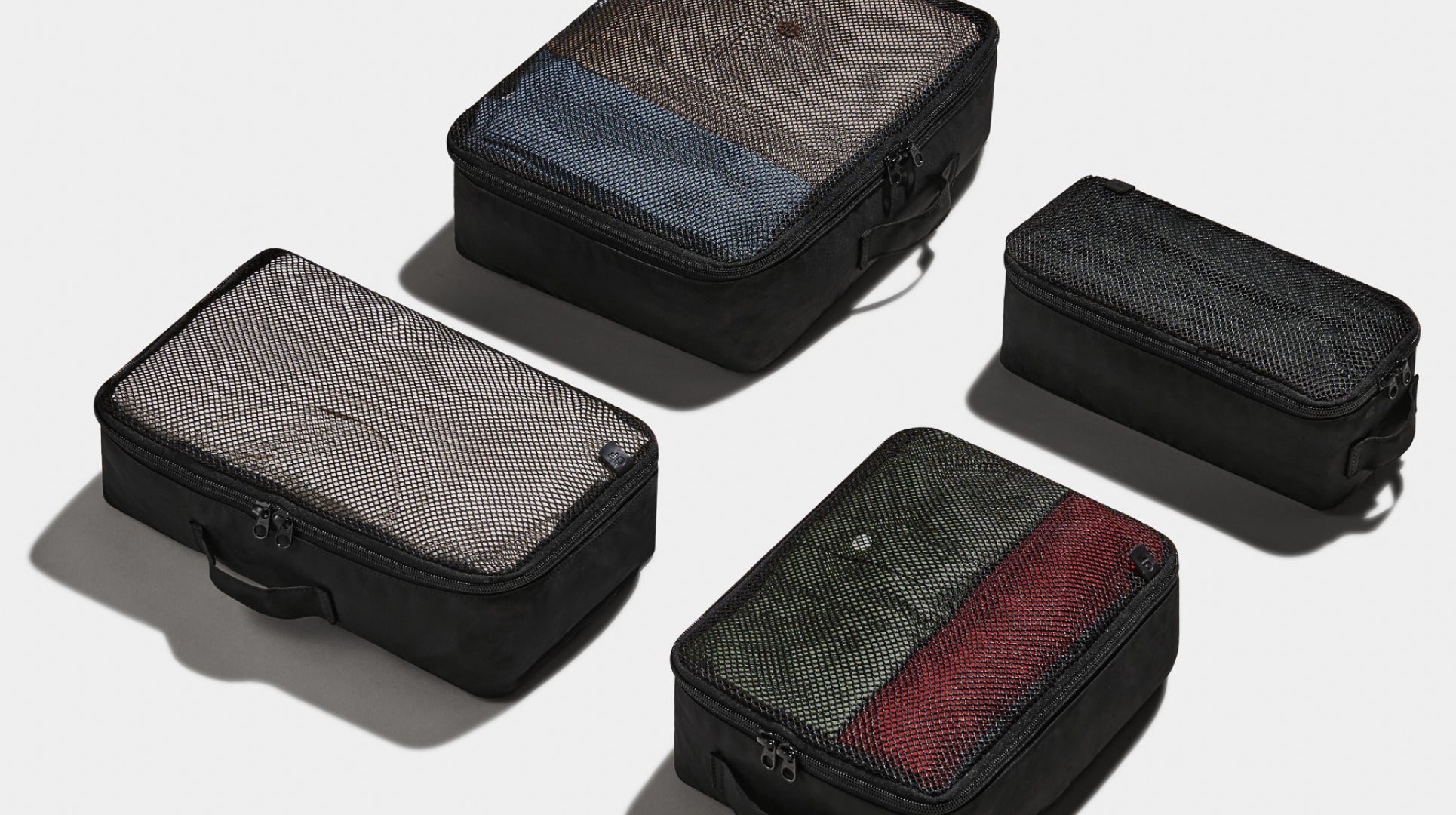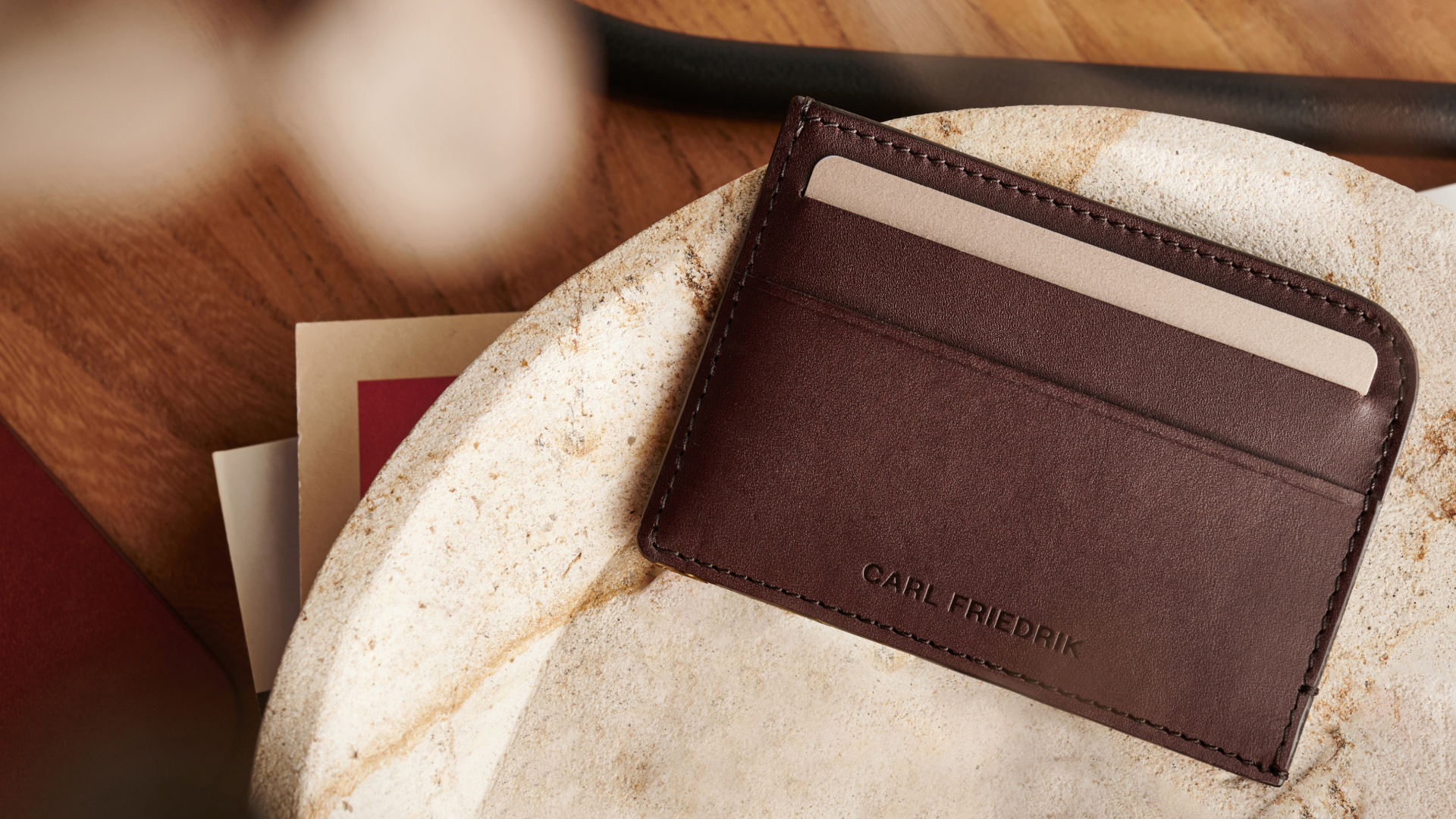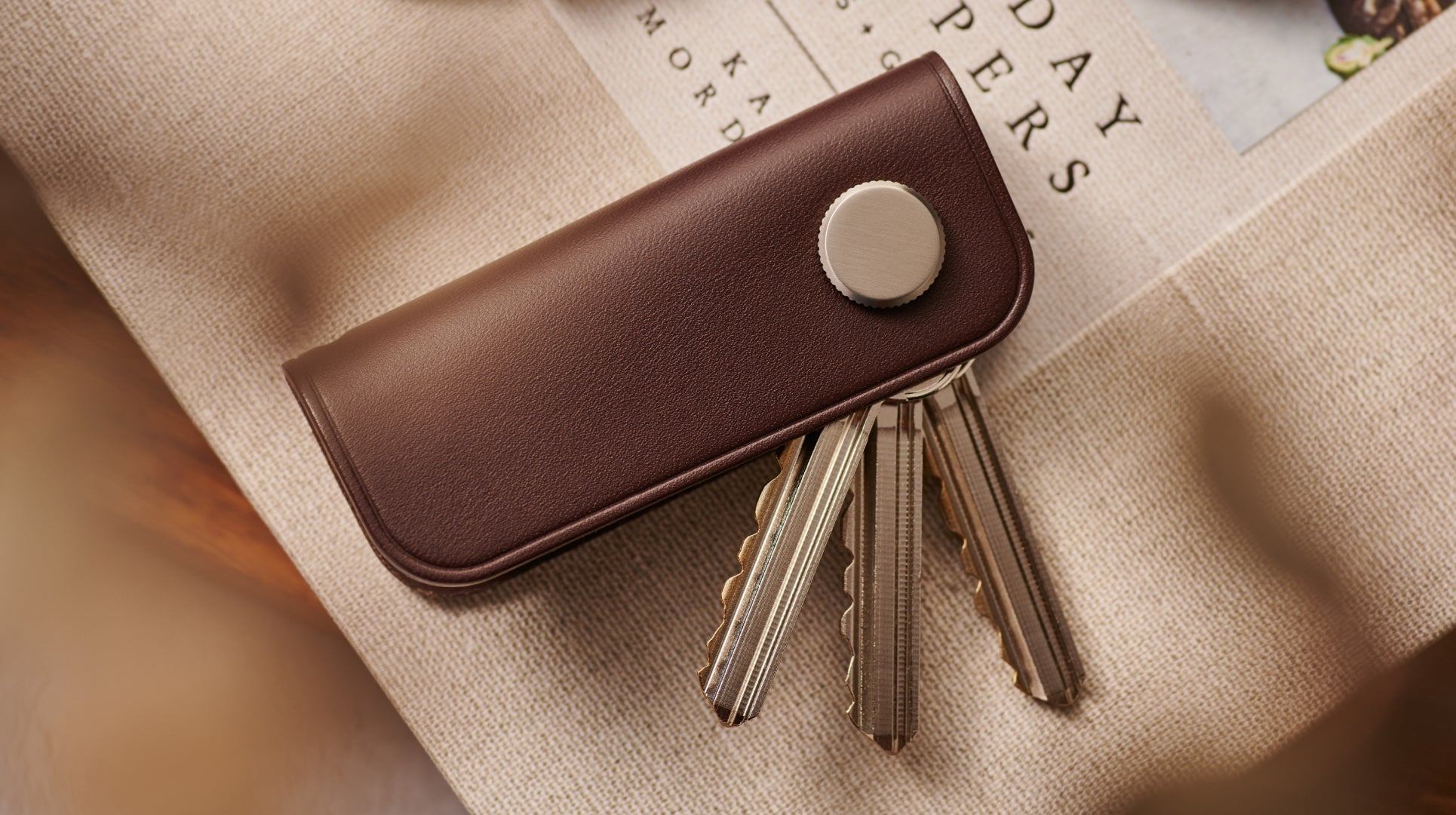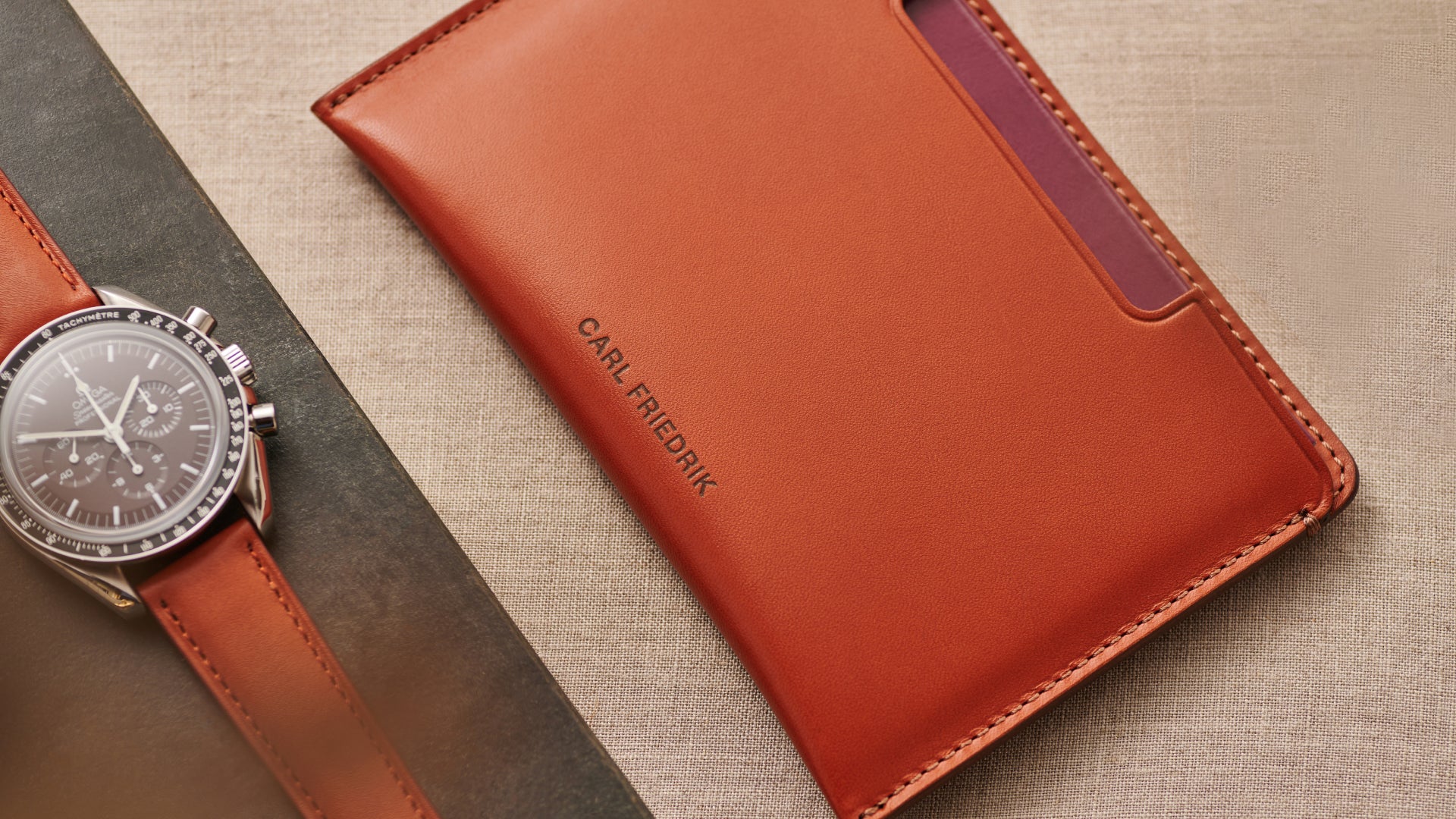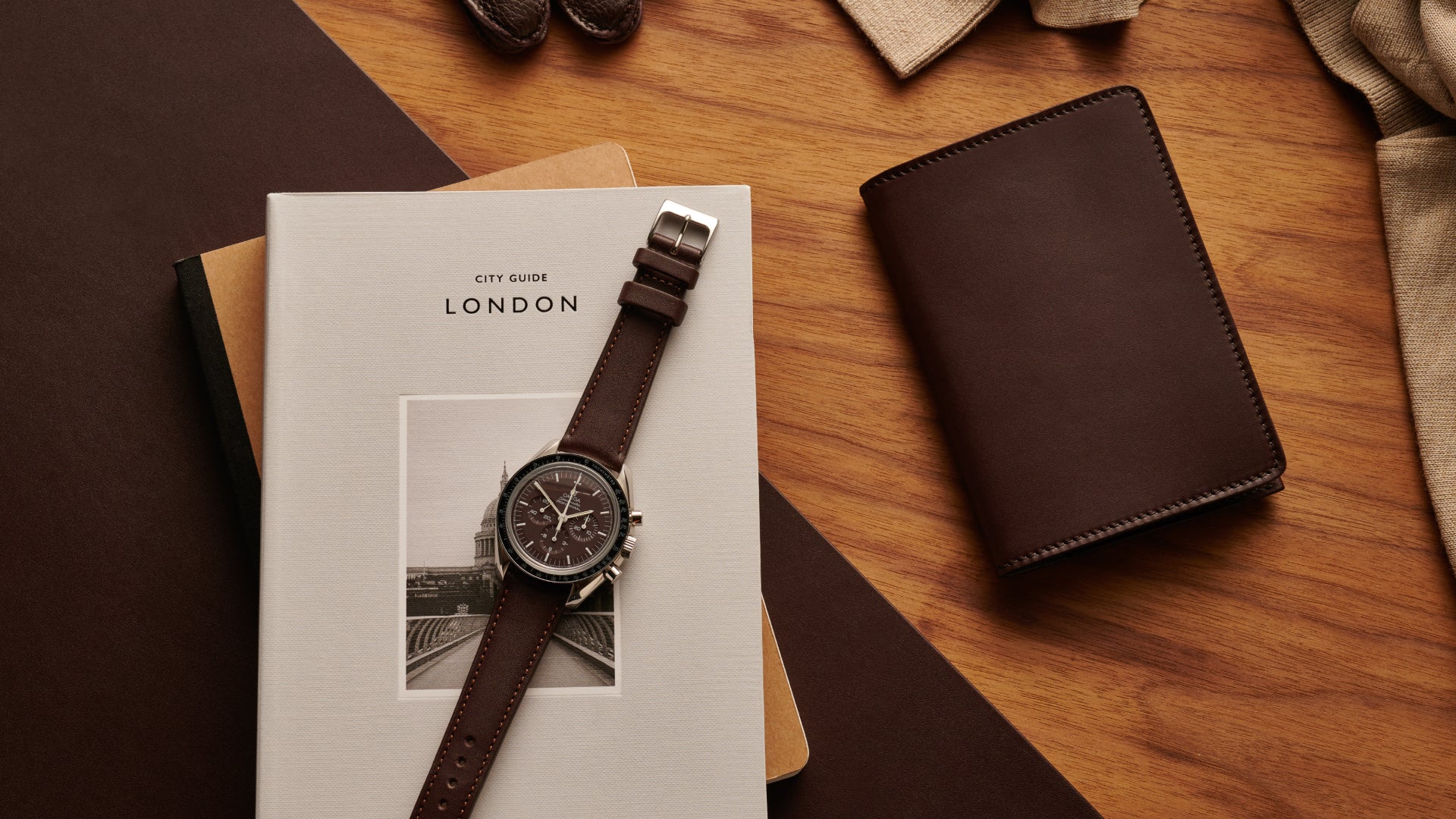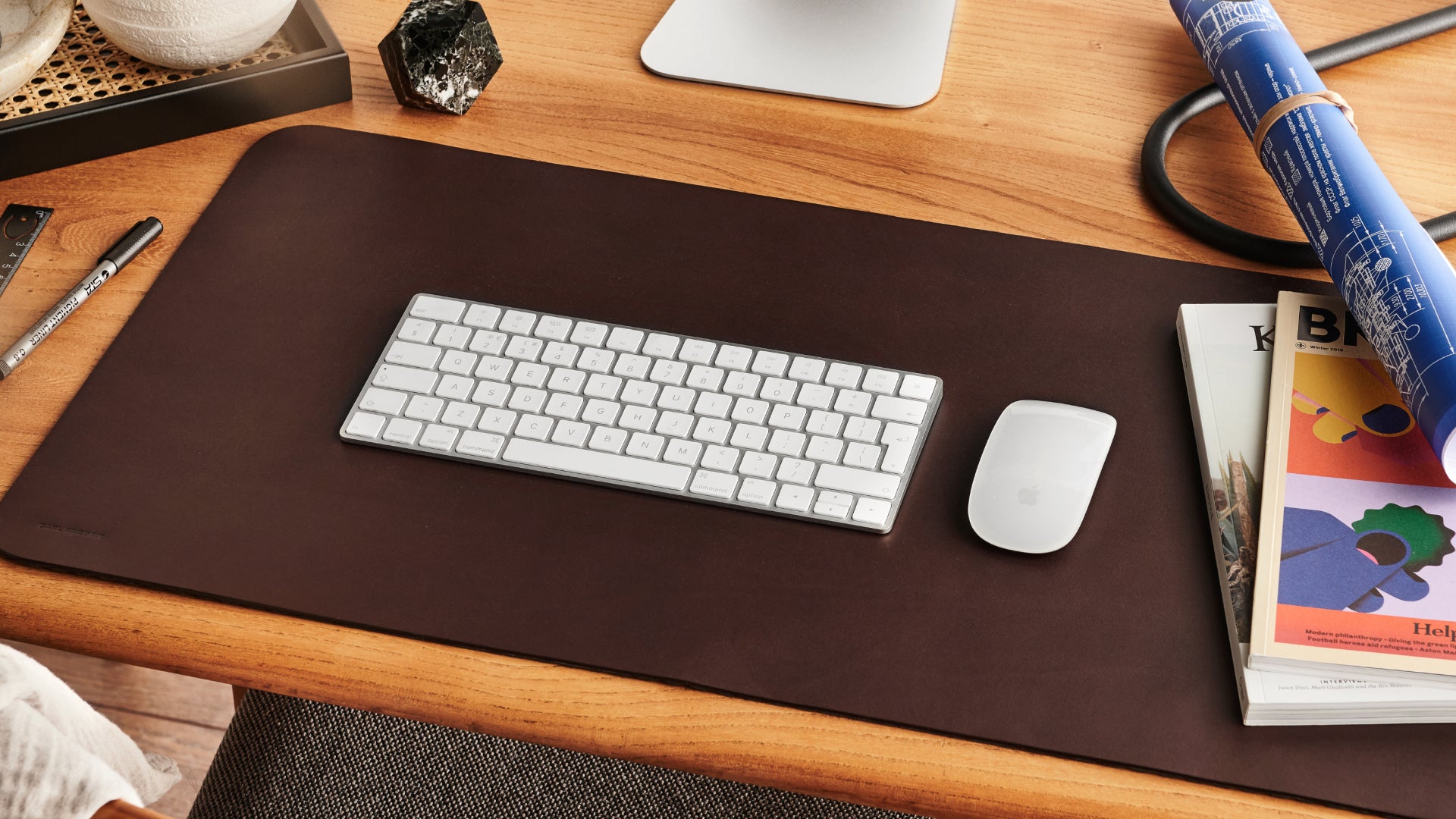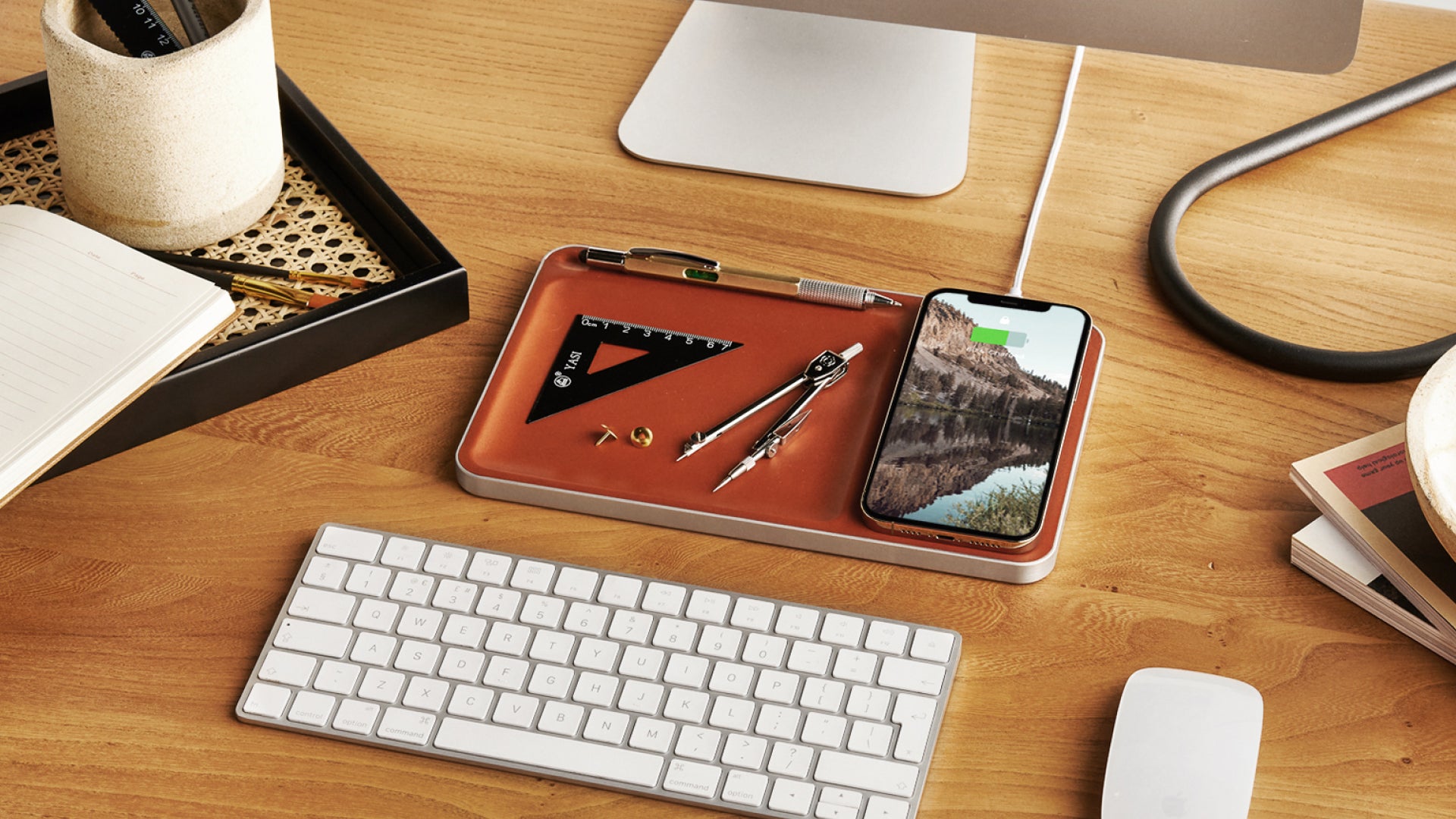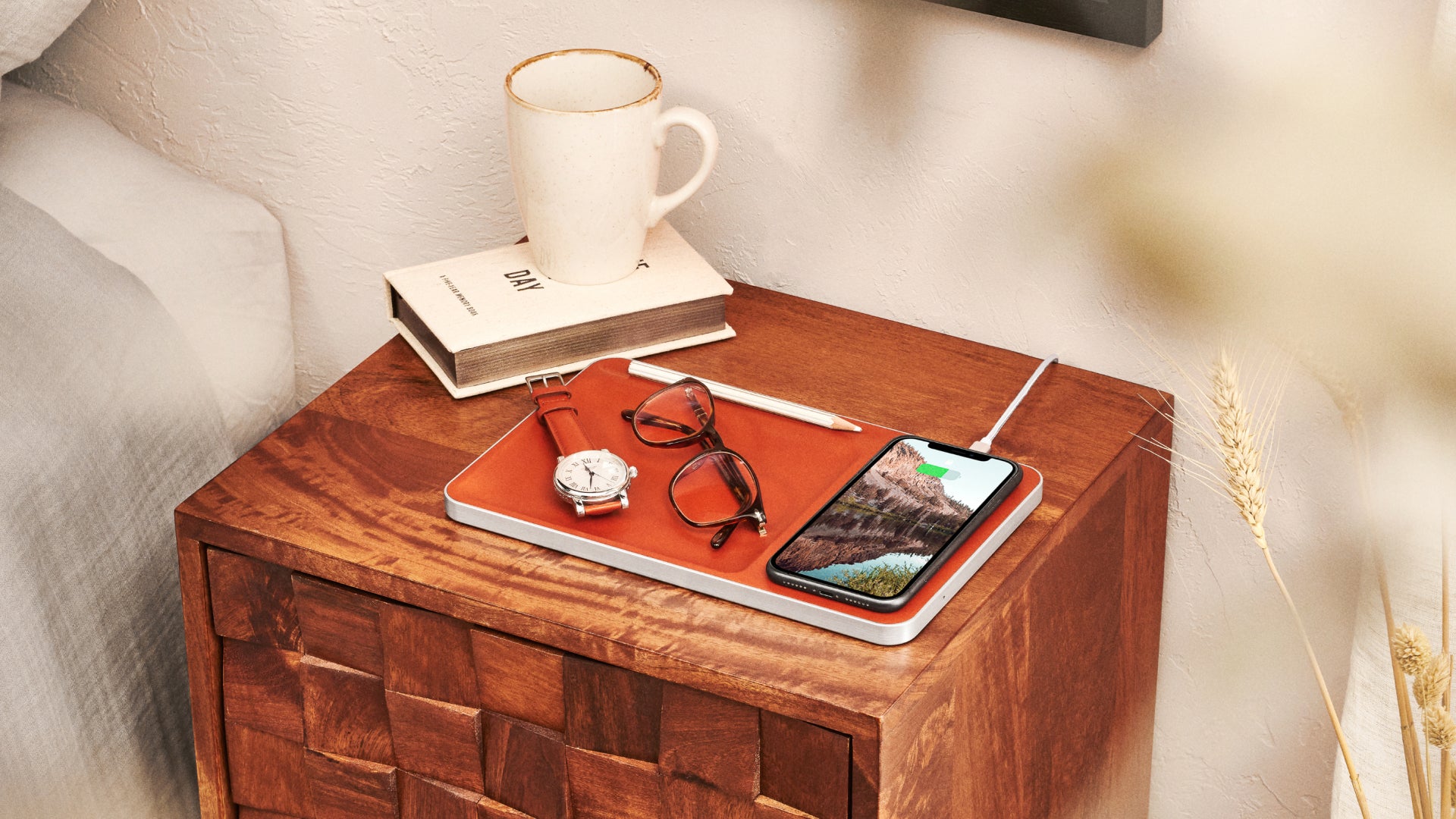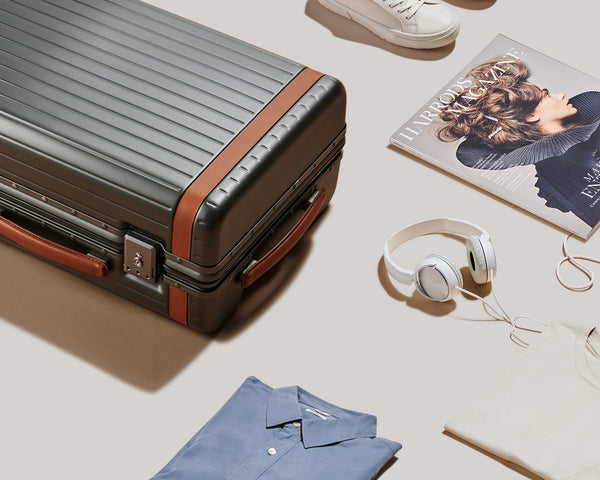The carry-on vs checked bag debate continues to polarise the opinion of travel experts right across the globe.
But while it might be hard for those tangled up in this heated conversation to admit, each methodology has its merits.
To help you decide which bag(s) to bring on your next flight, we're going to make a 'case' for both checked luggage and hand luggage.
It makes sense to start with a couple of definitions.
What is checked baggage?
Checked luggage is dropped off at the check-in counter after you arrive at the airport. It’s then weighed, labelled, screened and transported to your plane via a behind-the-scenes baggage handling system. Checked items are stored in the plane’s cargo hold and are inaccessible to passengers throughout the flight.
So what size is a checked bag? Unfortunately, there are no universal check-in size guidelines: airlines generally have their own unique measurement allowances. For example, the dimensions for an item of checked luggage on a 2022 British Airways flight are up to 90cm x 75cm x 43cm. Other airlines, like EasyJet, do not specify length, width or depth restrictions. Their rule is that the total size of a checked bag (width + length + depth) cannot exceed 275cm. Emirates is another popular airline that follows this method; its limit is 300cm.
We recommend you always check the luggage size restrictions of the airline you’re flying with before arriving at the airport — and weigh your luggage too. Airline carriers will charge for oversized baggage — never the best way to start your dream Caribbean cruise.
Air travel is not what it once was. While plane tickets have fallen sharply in the last few decades, airlines have compensated by unbundling services and raising the price of ‘extras’ (food, legroom, baggage). Passengers started paying for checked baggage around the time of the 2008 financial recession, with American Airlines the first blue-chip commercial airline to instigate extra fees.
Nowadays we are virtually expected to pay extra for checking a bag with a standard economy ticket. This is certainly the case with classic ‘budget’ air carriers (RyanAir, WizAir, EasyJet), although premium brands might offer 1-2 free checked bags. Again, restrictions vary, so do your due diligence before flying.

What is a carry-on bag?
A key difference between carry-on and checked bags is that the former are stowed away in the overhead compartment or below the chair in front, not the hold. So carry-on luggage can be reached during the flight, providing you with whatever essentials you need to relax and recline.
In fact, your carry-on luggage remains with you throughout the entire flying experience, from travelling through customs to embarking and disembarking the plane and travelling through customs once more on the other side of the world. If you lose it, you only have yourself to blame. That’s why seasoned travellers suggest packing valuables in carry-on bags, not checked baggage — which is entrusted to baggage handlers and subject to the whims of human or technological error.
How big can a carry-on suitcase be? As you might have expected by now, the maximum size of a carry-on suitcase varies depending on the airline and also whether it’s an international or domestic flight. Broadly speaking, regulations stipulate that carry-ons are within 20-25cm in width, 33-38cm in height and 48-58cm in length. For example, British Airways’ cabin bag maximum size is 56cm x 45cm x 25cm. These restrictions are in place to ensure the bags fit safely in the overhead compartment.
Airlines generally permit passengers to take 1-2 free items of carry-on luggage onto a flight. One of these is traditionally a ‘personal’ item, which must be smaller and weigh less than a carry-on suitcase. It’s generally best to opt for a backpack as your personal item, which can hold travel documents and devices.

Factors to consider
There’s a range of factors to contemplate when deciding whether to travel with carry-on or checked luggage. Start with the length and nature of your journey. Going on a brief weekend getaway to Paris in the height of summer? Get that carry-on out of the cupboard. Gearing up for a fortnight-long skiing trip to Val d'Isère? Only a check-in will be large enough to hold all the mountain apparel and après ski outfit changes you will require.
While on the subject of suitcase contents, it’s also best to think about your packing tendencies. Maximalists will be drawn to the superior space offered by a large check-in suitcase; minimalists might find that a smaller, more compact suitcase will suffice.
Monetary concerns come into the carry-on vs checked bag discussion as well. After all, the modern international holiday is expensive enough without the extortionate prices charged by most airlines for checking luggage. Many holiday goers forgo the additional space in the name of saving money.
A factor that’s quite self-explanatory but no less important is the logistics of your journey. Does the route to the hotel involve a stress-inducing walk through the narrow, cobblestoned streets of Barcelona’s old quarter? Or a serene taxi ride with views of the Amalfi coast and the prospect of your luggage being swiftly escorted to your room by the porter? The first situation clearly demands a smaller suitcase. The latter, less so.
Lastly, there’s the question of the airport. Opting for carry-on luggage means you can keep a close eye on your suitcase, but also the added responsibility of having to lug it through the airport. Fans of checked baggage are liberated of this task, although spend longer in the airport having to queue at check-in and baggage reclaim. Not to mention the prospect of lost luggage…

Carl Friedrik luggage
No matter where your allegiance lies in the great travel debate, our polycarbonate luggage range has you covered. Glide seamlessly through the hustle and bustle of the airport with The Carry-on X: a cabin suitcase fitted with silent 360° wheels and an uber-handy front pocket for quickly retrieving your passport and devices.
Or, if the promise of ample packing room and a suitcase-free jaunt through customs is too hard to resist, The Check-in might just be your next travel companion. It has a 66L capacity and the aluminium lock frame is highly durable: able to withstand the stereotypically coarse treatment of airline baggage attendants. For bonafide overpackers, The Large Check-in provides even more space (90L).

Benefits of checked luggage
Airport convenience
There’s certainly a strong argument that checking in luggage facilitates a smoother airport experience. The hectic queues at customs and the mad dash to your gate are that bit easier when you’re not hauling a heavy suitcase behind you. And there’s also the added luxury of boarding the plane and relaxing straight away, instead of fighting with your neighbours for overhead compartment space.
Additional packing space
Put plainly, checked bags can be both heavier and large than carry-ons, meaning you can stuff plenty more linen suits or tasselled loafers inside. If a spot of holiday shopping or snapping up discounted bottles of Grey Goose and men’s aftershave in duty-free is your thing, the extra suitcase space will go a long way.
More relaxed TSA regulations
Most of us have been there. That manic 5-minutes before reaching customs where you’re forced to fit all the liquids from your carry-on into one tiny, see-through plastic bag. Only to find, as the baggage attendant manning the X-ray machine is all too happy to tell you, that some of your liquid bottles exceed the 100ml limit. And just like that, an expensive new moisturiser and your favourite Aesop aftershave balm are in the bin. Too bad. TSA’s checked luggage restrictions are a lot less severe — not least when it comes to liquids.

Disadvantages of checked luggage
Additional fee
Most airlines across the globe charge extra for checked luggage. In the UK, it costs around £30-60 per leg to check one bag in the hold. Prices tend to go up the more suitcases you add. Of course, if you travel business or first class, a checked luggage allowance of 1-2 suitcases will likely be part of the package. Other variables, like whether it’s a domestic or international flight and loyalty perks, can influence your luggage allowance as well.
Potential of theft or damage
We’ve all heard the horror stories: luxury travel cases that are visibly damaged as they reach baggage reclaim or have disappeared in transit altogether. In fact, despite increased automation and high-speed conveyors boosting productivity, SITA reported 1.4 million items of lost luggage in 2019. Given that the average value of a Brits’ checked-in suitcase is £535, it's not surprising that many prefer to travel exclusively with carry-on luggage.
Time-consuming
Minutes (sometimes hours) spent queuing at the check-in desk or waiting at the conveyor belt for luggage do add up. So if time is of the essence you might be swayed by the streamlined nature of travelling with a carry-on vs checked baggage.
Benefits of carry on luggage
Agility and efficiency
Whether you’re boarding the Eurostar in Central London or climbing four flights of stairs to find your Airbnb, moving around with a light item of carry-on luggage is infinitely more flexible than carrying an ultra-heavy case. If you’ve got a long and physically demanding journey ahead of you, there’s really only one way to go.
Accessibility
Flight delayed? Long layover? Bored and sleep-deprived on the plane? In any of these situations, having carry-on luggage on hand is a massive coup. Be it a sleeping mask, novel or even a toothbrush, the essentials stored inside can enlighten a bad travel situation and bring a touch of comfort.
Safety
Fact: it’s a lot more common to lose checked luggage than carry-on luggage during a holiday. The latter remains under your supervision throughout the duration of a journey, while checked bags go on a holiday of their own once you leave them at the airline’s check-in kiosk. Particularly if you’re travelling with valuables, the carry-on lifestyle allows a level of surveillance that just can’t be matched.
Cost savings
As previously mentioned, the vast majority of airlines will not charge you for boarding with a carry-on suitcase or personal item.

Disadvantages of carry-on luggage
Packing complications
With less packing space to work with, it can be difficult to fit in everything you need for your trip — especially for those longer than 4-5 days. That said, with so many helpful packing articles online, it’s easy to pick up tricks and learn how to maximise space. Challenge accepted?
Stricter TSA guidelines
The TSA has much stricter carry-on luggage rules because items can be easily accessed during the flight. Anything that could be used as a weapon, from sports equipment to sharp grooming tools like scissors, is off-limits. A rule that won’t affect many travellers, but worth bearing in mind to avoid unwanted delays at customs.

Carry-on bag vs checked bag comparison table
|
|
Carry-on luggage | Checked luggage |
|
Restrictions |
Liquid containers more than 100ml, sharp objects (scissors etc) | Lighters, lithium batteries, alcohol over 70% ABV |
| Size | For UK, generally within 20-25cm in width, 33-38cm in height and 48-58cm in length | Varies depending on the airline and flight destination |
| Weight | Generally up to 23kg in the UK | Generally up to 32kg in the UK |
| Ease of travel | Relatively small and lighter | Heavier and harder to manoeuvre |
| Safety | Relatively safe and secure, stays with the owner at all times | Can get damaged and/or lost during transit |
| Ideal for | Short trips (1-5 days) | Longer trips (6 days+) |
Takeaway
Although the carry-on vs checked bag dispute will continue to wage on, we’ve hopefully shown you that both methods have their respective cons and drawbacks. The bottom line is that cost, time and convenience are the key priorities when travelling — and your choice of luggage certainly reflects that. But if you still can’t decide between the two, there’s certainly no shame in opting for both.
